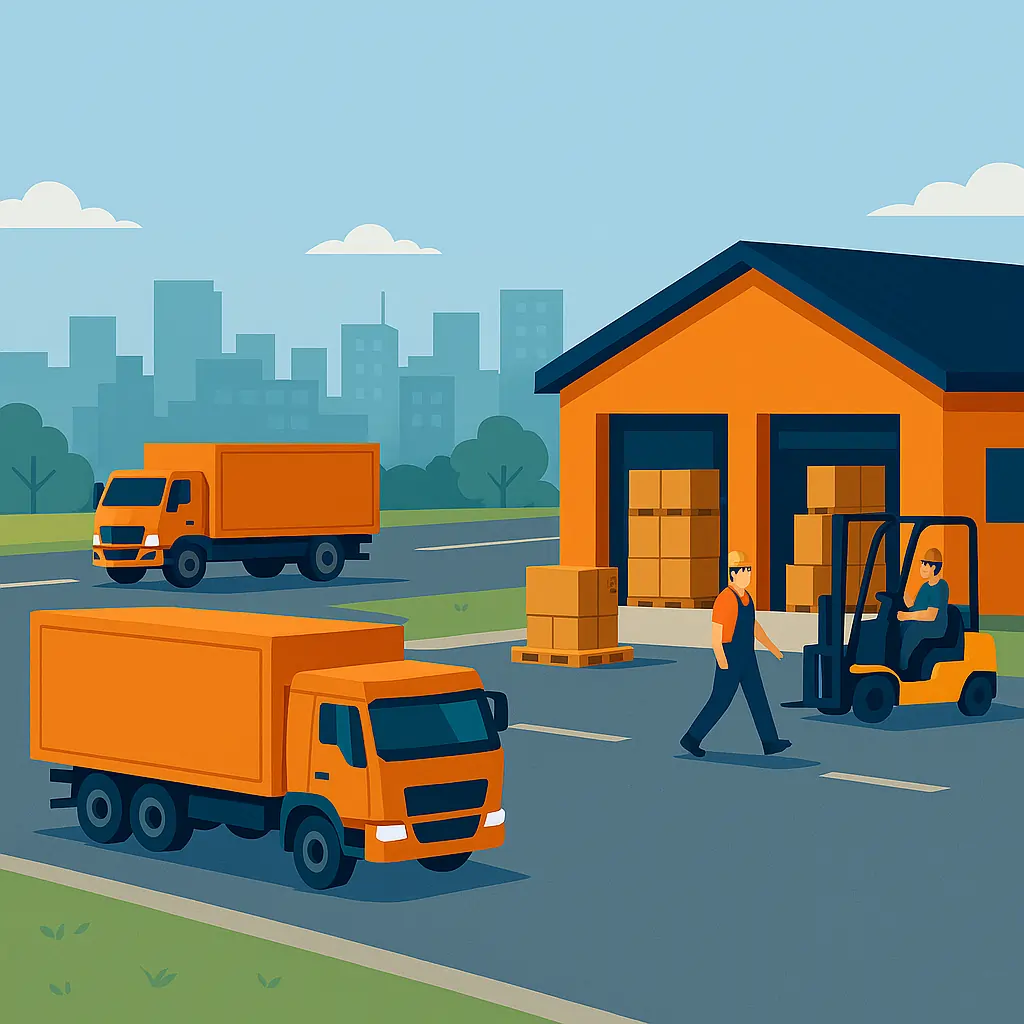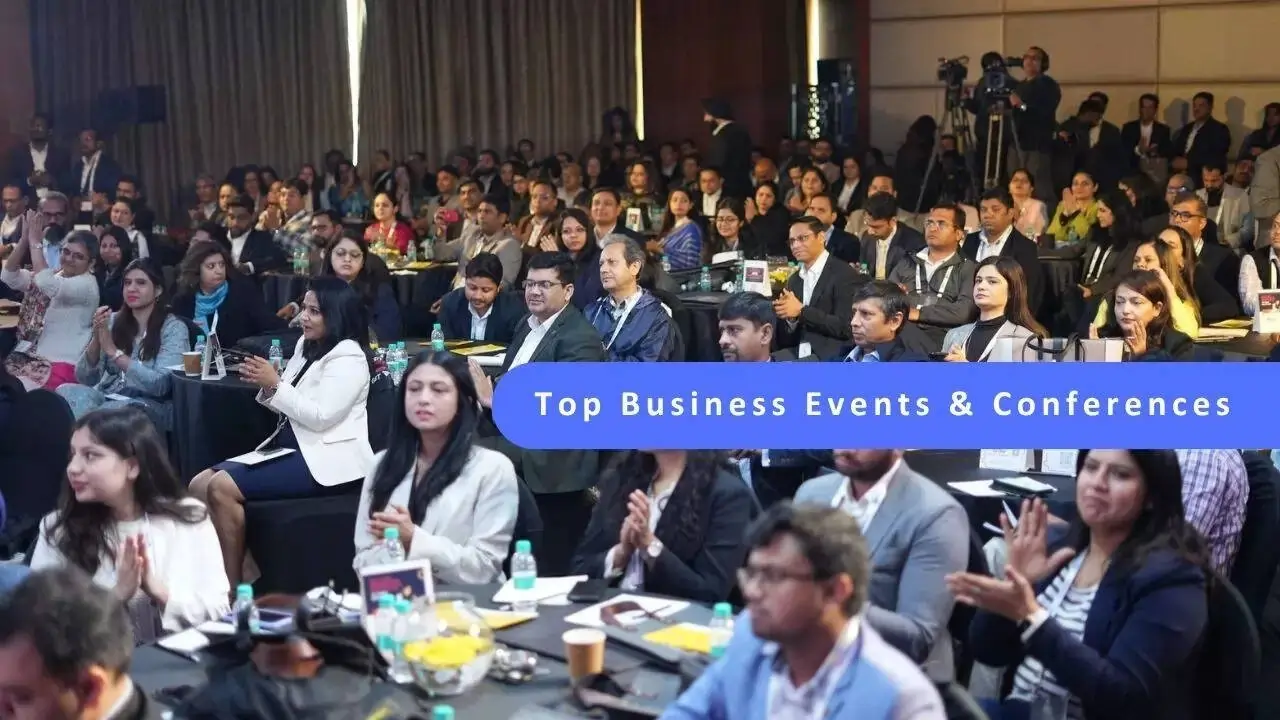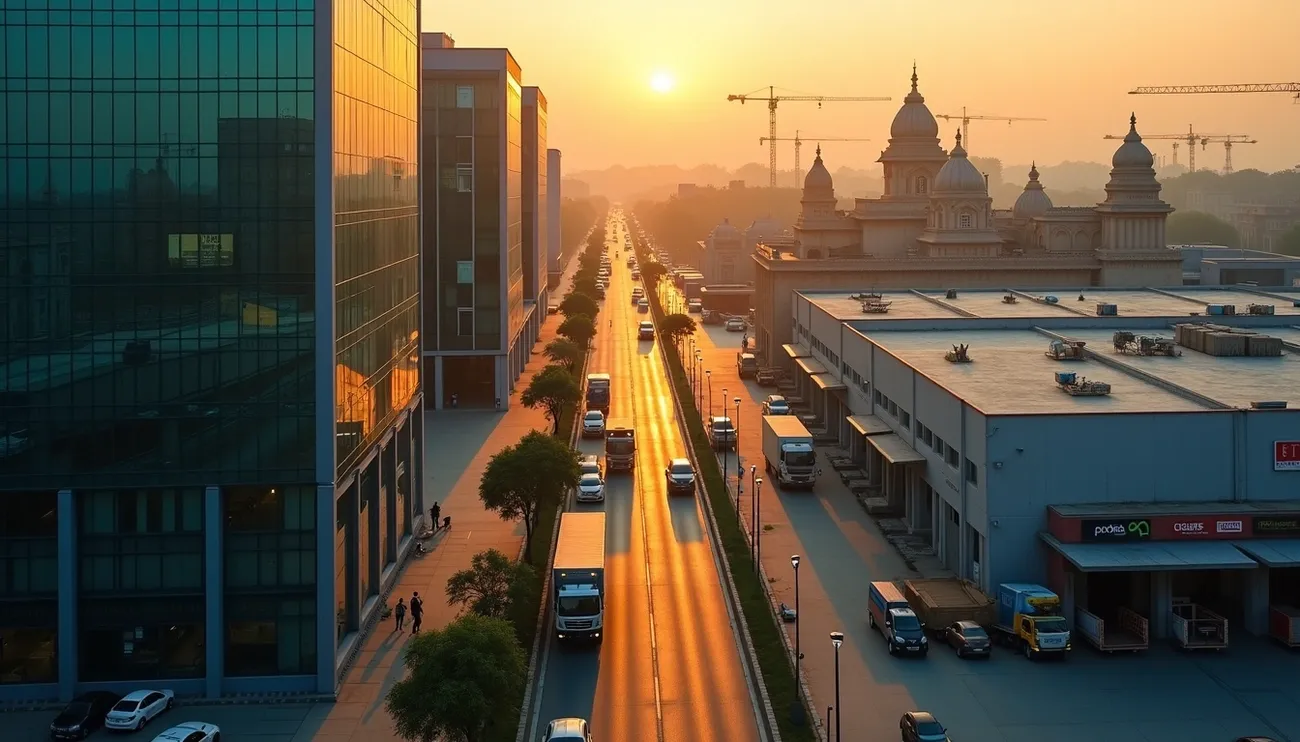India’s tier 2 cities are driving an unprecedented economic change through a quiet internet revolution that reshapes the nation. Non-metro cities now contribute over 80% of new internet users, which powers the Indian eCommerce market’s impressive 23% annual growth. Smaller cities have evolved beyond mere participants to become leaders in this business transformation.
Several factors fuel the B2B expansion in emerging cities. These regions provide significant cost advantages with 20-30% lower expenses for real estate, utilities, and salaries compared to Tier-I metros. Digital adoption continues to surge, as platforms like Meesho see more than 60% of their orders originating from non-metro regions. The growth story gains additional strength from these cities’ remarkable talent pool. Smaller urban centers produce 60% of India’s technology graduates. This piece examines how these emerging business hubs reshape India’s B2B scene and create opportunities that businesses cannot overlook.
The Shift from Metros to Emerging Cities
India’s business landscape is changing beyond major cities. The economic power now lies in smaller urban areas. Tier 2 and tier 3 cities now make up 51% of the nation’s registered MSMEs. This change shows how India’s economic map is taking a new shape.
Why Tier 2 Cities Are Gaining Attention?
Smaller cities have become hubs of innovation and growth. These cities host just 7% of India’s 1,700 Global Capability Centers (GCCs), which presents a huge untapped market. Companies like Diageo, Calsoft, Flex, and Kraft Heinz saw this chance early. They set up operations in Kolkata, Mangalore, Ahmedabad, and Coimbatore to gain an edge.
The Role of Digital Adoption in Regional Growth
Digital technology has removed location barriers for businesses in smaller cities. Local service providers can now work with nearby partners to create budget-friendly and profitable operations. The rise of hybrid work, satellite offices, and co-working spaces has made it easier to hire talent from these growing urban areas.
Why Tier 2 Cities Are the New B2B Frontier?
B2B business is booming in these areas. Yes, it is exciting to see unique businesses creating online stores. Selling platforms have welcomed more than 200,000 small businesses from tier 2 and tier 3 cities since the lockdown ended. McKinsey and Company’s research shows that 68 percent of B2B decision-makers in India found omnichannel sales to work better than older methods.
The Saturation of Tier 1 Markets
Big cities are reaching their limits with challenges that make growth difficult. Operational costs in tier 1 cities are 60-80% higher than smaller cities. Major metros face a high 15.2% average attrition rate, making it hard to keep talent. These cities also struggle with poor infrastructure, water problems, bad sanitation, and air quality issues.
Cost Advantages and Infrastructure Upgrades
Smaller cities offer better financial benefits:
- Indore’s office space costs 60% less than Bengaluru
- Living costs are 10-35% lower than the nearest tier 1 city
- Companies spend less on hiring and keeping talent due to 30-40% lower attrition rates
Infrastructure in smaller cities is catching up faster. The government plans to spend over 130.1 billion EUR on urban infrastructure in non-metro cities through PM Gati Shakti Master Plan and Smart Cities Mission. Tier 2 cities dominate the top 10 Ease of Living index—Ahmedabad, Surat, Coimbatore, Vadodara, and Indore.
Government Incentives and Policy Support
State and central governments help businesses move to smaller cities. States offer land acquisition subsidies, stamp duty benefits, and tax breaks. The Urban Infrastructure Development Fund (UIDF) gives affordable, long-term funding with an annual budget of ₹10,000 crore to improve basic services. Special Economic Zones in these cities provide duty-free imports, flexible labor laws, and simple clearances.
How Reverse Migration Is Fueling Local Economies?
The pandemic led to a huge reverse migration, with more than 1.04 crore migrants returning home by mid-September 2020. This created a skilled workforce in tier 2 cities that companies can utilize. Women’s job applications have grown substantially between 2021 and 2024 in sales, business development, and logistics. This population shift creates lasting talent pools in previously ignored regions.
KPMG expects these investments to add USD 500 billion to GDP from tier 2/3 cities by 2030. Better urban mobility and digital systems will drive this growth.
Understanding the Tier 2 B2B landscape
Indian cities’ classification offers a basic framework to understand B2B potential throughout the country’s digital world. Major metros used to lead all business discussions, but tier 2 cities now create their own unique place in India’s economic story.
Defining Tier 2 Cities in the Indian Context
India’s official system labels tier 2 cities as ‘Y’ cities under the housing rental allowance (HRA) classification system. The 2011 census data shows 97 tier 2 cities across the country. Different sources define these populations differently. The Reserve Bank of India’s definition includes cities with 50,000 to 99,999 people. Other frameworks label cities with 1 to 5 million residents as tier 2.
These cities serve as regional capitals or industrial hubs that act as secondary urban centers. Many of them are state capitals, industrial bases, or growth centers that expand their economic reach beyond traditional limits.
Key Differences from Tier 1 Markets
Tier 2 cities differ from metros in several ways:
- Economic structure: Tier 1 cities have diverse economies. Tier 2 markets focus on specific areas like IT, textiles, manufacturing, or education.
- Cost dynamics: Property costs in tier 2 cities stay more affordable for middle-class families and businesses that need less capital. People earn 30-40% less here than in major metros, though this gap shrinks as talent demand grows.
- Infrastructure development: These cities attract big investments in connectivity and public facilities. New highways, metro projects, and airports change their urban setup.
- Work environment: People in tier 2 cities enjoy better work-life balance with shorter commutes and less pollution.
Examples of High-Growth Tier 2 Cities
Some tier 2 cities stand out as promising B2B hubs:
- Ahmedabad (Gujarat): Known for petrochemical and chemical manufacturing, shipbuilding, textiles, gems and jewelry, and pharmaceuticals.
- Jaipur (Rajasthan): Mixes heritage tourism with industrial growth, especially in jewelry and handicrafts.
- Lucknow (Uttar Pradesh): This administrative and educational hub attracts millions in investments to grow its local economy.
- Mysuru: A rising technology hub with growing IT industry, precision engineering and healthcare/pharmacy sectors.
- Nagpur (Maharashtra): Central India’s logistics hub offers ideal connectivity for imports and exports.
- Pune: Top choice for Global Capability Centers (GCCs) that specialize in IT, automotive, and manufacturing.
Government programs like the Smart Cities Mission help these urban centers build reliable infrastructure to support thriving B2B ecosystems in multiple sectors.
Sectors Driving the B2b Boom in Tier 2 India
Different sectors lead the B2B revolution in India’s tier 2 cities. Each sector plays a unique role in expanding regional economies.
B2B E-Commerce and Marketplaces
Digital marketplaces now reach well beyond big cities. 31.5% of Amazon Business’s sales come from Tier 2 and smaller cities. This shows how regional businesses have embraced digital platforms. The pandemic pushed more than 200,000 small businesses from these cities to go online. Small-city businesses can now serve both local and big-city clients through budget-friendly revenue channels.
B2B SaaS and Tech Startups
A “SaaS mafia” has quietly taken root in previously overlooked cities. Companies like Responsive in Coimbatore, Supersourcing in Indore, Appointy in Bhopal, DreamCast in Jaipur, Dhiwise in Surat, and CallHippo in Ahmedabad have become regional tech anchors. These startups stay bootstrapped longer than their tier 1 peers. They focus on profits instead of chasing high valuations. Their success breeds more success. Responsive has helped launch at least three new ventures, while DreamCast inspired startups like Tagbox.com and Getgabs.com.
Logistics and Supply Chain Breakthroughs
The logistics landscape in smaller cities changes faster than ever. CBRE’s 2024 report shows that tier 2 and 3 cities make up 36% of all new warehousing lease volumes—up from 22% in 2021. Dedicated Freight Corridors have made cities like Kanpur, Rewari, and Sanand prime warehousing spots. Transit times have dropped by up to 40%. More than 35 multi-modal logistics parks planned in cities like Nagpur and Vijayawada will bring storage, processing, and distribution under one roof.
Local Manufacturing and Industrial Growth
Manufacturing is the life-blood of economic growth in emerging cities. This sector adds about 16-17% to India’s GDP and provides jobs to over 27 million workers. 51% of India’s 63 million registered small enterprises operate from tier 2 and tier 3 cities. Business activity in these regions has jumped 35%, and 44% of investors now target these markets. The manufacturing boom spans textiles, food processing, electronics, and pharmaceuticals. Government programs like Production-Linked Incentive schemes have already given out ₹21,534 crore in incentives.
The Logistics Backbone of Regional B2B Growth

Image Source: Ai Generated
India’s B2B ecosystem relies heavily on logistics infrastructure, which is reshaping how commerce works in tier 2 cities. This development helps businesses reach new markets more efficiently than ever before.
B2B Logistics in India: Current Trends
The express logistics industry has become crucial to India’s economic growth. The sector is now worth about USD 9 billion and has shown a strong 12-15% CAGR since FY17. The market’s dynamics have changed a lot – B2C and C2C segments make up 55% of the market, which used to be B2B’s territory.
The domestic express segment makes up about 70% of the market, worth USD 6.3-6.5 billion. The government’s programs like Bharatmala Pariyojna, GST implementation, E-way Bill, and FASTag have made road logistics more efficient. The industry now uses advanced technology, with AI-powered predictive analytics that help forecast demand, optimize routes, and manage inventory better.
Decentralized Warehousing and Fulfillment
Businesses expanding into tier 2 markets now prefer decentralized warehousing. Companies spread their inventory across multiple warehouses near customers to get these benefits:
- Faster Deliveries – Products ship from the closest facility, which cuts down delivery times
- Lower Transportation Costs – Shorter shipping distances save on fuel and time
- Improved Risk Distribution – Having multiple locations keeps business running during problems
- Enhanced Regional Adaptability – Local inventory adjustments happen quickly when demand spikes
This setup works great in tier 2 cities where warehouse space will reach 1.2 billion square feet by 2027. Companies can manage their inventory better by placing it strategically based on each region’s needs.
Quick Commerce and Last-Mile Delivery
Quick commerce has changed India’s retail ecosystem beyond big cities. This has created more need for hyperlocal logistics, and local delivery systems now replace traditional long-distance shipping.
Smaller towns come with their challenges. Dark stores handle fewer than 1,000 orders daily outside the top 10-15 cities, dropping below 700 in the next 20 cities. Each region has different delivery infrastructure, payment choices, and digital literacy levels.
Success in tier 2 cities depends on hyperlocal fulfillment strategies. Companies now invest in route optimization algorithms, electric vehicles, and dark store technology to work efficiently while delivering on time.
Technology as a Growth Enabler in Smaller Cities
Technology is the life-blood of tier 2 cities’ economic rebirth. These emerging hubs now connect to global markets through digital bridges.
Digital Transformation in Tier 2 India
Tier 2 and tier 3 cities have evolved into digital powerhouses from their once-peripheral status. They now contribute about 82 MW (6%) of India’s total data center capacity. Experts predict this capacity will surge to 300–400 MW by 2030. Better fiber connectivity, quick market access, and proximity to growing user bases propel this digital world’s growth.
Rise of B2B Digital Platforms in India
B2B platforms have changed how tier 2 businesses work. Online listing platforms lead user adoption rates as MSMEs use them to generate business opportunities. IndiaMART, a 25-year-old player, dominates the online listing market. Meanwhile, platforms like Udaan, Bizongo, and Beldara offer complete business enablement services.
Mobile-First and Vernacular Strategies
The mobile revolution has changed how tier 2 markets consume digital content. More than half of India’s 936 million internet users prefer browsing in their native language. Companies now focus on regional language strategies. These cities show higher voice search adoption rates than metros. People find speaking easier than typing in regional languages.
Ai and Automation in B2b Operations
AI adoption reshapes key sectors in smaller cities. India scores 2.45 out of 4 on the NASSCOM AI Adoption Index, and 87% of enterprises use AI solutions actively. The tech sector grows faster, with annual revenues expected to exceed USD 280 billion this year. Industrial, automotive, consumer goods, retail, banking, and healthcare sectors lead AI implementation.
API-First Integrations and Real-Time Data
API integrations let business systems exchange data securely and instantly. This saves money and boosts customer experiences. Tier 2 businesses can scale operations without heavy infrastructure investment. Development teams have embraced the “API first” approach, with 74% following it. Companies can work efficiently while reducing costly mistakes.
Social Commerce and Influencer-Driven Sales
Social commerce has transformed tier 2 businesses’ marketing and sales approach. Social shopping influences 37% of total online purchases. Social platforms now work as complete shopping destinations. Customers buy directly through Instagram feeds, WhatsApp chats, and live shopping events. Micro-influencers achieve 4X higher engagement than celebrities at 70% lower costs. This gives smaller city businesses affordable marketing options.
Talent and Workforce Transformation
India’s smaller urban centers are experiencing a remarkable talent development that builds the human foundation for B2B growth beyond big cities.
The Rise of Skilled Talent in Tier 2 Cities
Tier 2 cities have become vibrant talent hubs with digitally skilled talent growing over 25% in just two years. These emerging centers give businesses substantial financial advantages. Companies can save approximately 25% on employment costs through lower real estate prices and reasonable compensation expectations. The locations also see 20-30% lower attrition compared to tier-1 hubs’ 15.2%, which creates stable workforces and drives business continuity.
Educational institutions in tier 2 cities steadily strengthen this talent ecosystem. About 60% of India’s technology graduates come from tier 2 and 3 cities, creating a rich pool of skilled professionals. The India Skills Report 2023 reflects this trend – Lucknow and Mangalore, both tier-2 cities, rank among India’s top three most employable cities.
Remote Work and Reverse Migration Trends
The pandemic reshaped India’s talent distribution by triggering major reverse migration. Hiring in tier 2 and tier 3 cities has grown by 21% year-on-year in September, surpassing metros like Mumbai, Delhi, and Bengaluru. Cities like Jaipur, Lucknow, Coimbatore, Indore, Bhubaneswar, and Kochi show the strongest growth.
Key factors driving this migration include:
- Better quality of life with lower costs
- Less migration stress and improved work-life balance
- More investments in smaller city infrastructure
- Digital connectivity enabling remote work
Building Sustainable Talent Pipelines
Companies implement strategic workforce development initiatives to keep this momentum. They strengthen industry-academia collaboration, as seen with Synopsys partnering with IIT Bhubaneswar. Organizations launch corporate training programs with ed-tech platforms, develop in-house certifications, and promote continuous learning through digital platforms.
Government support plays a crucial role in this transformation. The Union government develops policies that offer incentives for setting up Global Capability Centers in smaller cities. State governments provide subsidies, tax benefits, and infrastructure support to attract businesses.
Success Stories from Tier 2 B2b Startups

Image Source: The Economic Times B2B
Statistical trends tell only part of the story. Ground success stories from tier 2 cities show how B2B innovators reshape India’s business scene.
Case Studies of B2B Startups in Tier 2 Cities
CarDekho grew from a small Jaipur venture into a nationwide used car platform. Gramophone helps farmers in Indore make smart agricultural decisions by utilizing the city’s proximity to rural India. Genrobotics started in Kochi and developed robotic alternatives to manual scavenging that expanded to cities throughout India.
How Local Founders Are Solving Regional Problems?
Tier 2 entrepreneurs have a unique edge – they know the challenges firsthand. These founders create solutions right from factory floors and logistics hubs, not just through pitch decks or distant analysis. Their closeness to everyday problems leads to practical innovations that matter immediately.
B2B SaaS Growth Stories
India’s SaaS sector has produced remarkable wins. BrowserStack started as a bootstrapped venture that solved cross-browser testing challenges and now serves customers in over 135 countries. Freshworks began in Chennai with a simple helpdesk tool and grew into a global SaaS powerhouse, becoming India’s first SaaS company listed on NASDAQ.
Local Entrepreneurship and Innovation
Smaller cities’ entrepreneurial ecosystem thrives on lower operational costs. A tier 2 startup runs for months on what metro-based competitors spend on one PR campaign. Nearly 50% of India’s recognized startups now come from tier 2 and tier 3 cities.
Lessons from Fast-Scaling Regional Businesses
Tier 2 startups focus on profits instead of vanity metrics. They solve actual problems and stay patient through growth phases. These companies prove that good technology doesn’t need metropolitan locations, as talented professionals choose to stay in or return to smaller cities.
What Brands and Investors Need to Do Now?
Businesses must take a different approach to capture tier 2 markets compared to metropolitan areas. Brands and investors need strategic adaptation to capitalize on India’s next growth frontier.
Choosing the Right City for Expansion
The right location requires a full picture of the most important factors. Cities like Coimbatore, Visakhapatnam, Bhubaneswar, Indore, Chandigarh, and Trivandrum provide great chances through skilled labor pools and lower operational risk. Businesses should think over:
- Modern office facilities and uninterrupted digital connectivity
- Academic alliances with local educational institutions
- Government incentives and quick approval processes
- Cost benefits (usually 20-30% lower in real estate, utilities, and salaries)
Organizations often succeed with a hub-and-spoke model. Tier 1 cities work as major hubs while tier 2 cities become specialized spokes.
Rethinking Go-To-Market Strategies
Regional markets don’t respond to traditional approaches. Companies can’t use identical GTM strategies. They must segment their approach based on consumer profiles, locations, and products. The strategy works with:
- City microsegmentation based on consumer demographics and behavior
- Smart selection of channel partners using size, infrastructure, and growth potential
- Programs that improve retail execution
- Quick adaptation to new channels as they emerge
Adapting Product-Market Fit for Local Needs
True product-market fit happens in cities like Bhopal and Mysore, not in Bangalore or Mumbai. Products need customization for physical requirements and social context. Key points show that:
- Local owners know customer priorities better than remote decision-makers
- Local language communication matters more than English and Hindi
- Price-conscious Indian markets value affordability
- Regional success depends on “Indianization” of products and services
Omnichannel and Hyperlocal Strategies
Indian market includes various consumer segments with unique shopping preferences. A successful strategy needs:
- Smooth integration across sales channels for easy platform transitions
- Mobile-first approaches as mobile commerce grows rapidly
- Resilient infrastructure with complete inventory visibility
- Retail networks supporting buy online, pick up in-store options
Building Regional Teams and Partnerships
Mutually beneficial alliances help navigate regional complexities. Joint ventures provide market entry options, and manufacturing partnerships create India-specific products. Companies should:
- Build credibility through local influencer relationships
- Connect with community groups and educational institutions
- Work with regional angel networks for funding opportunities
- Cooperate on logistics to solve infrastructure challenges
Tapping into Local Talent Pools
Tier 2 and 3 cities produce 60% of India’s technology graduates, offering access to skilled talent. Smart companies can:
- Run innovation challenges at tier 2 engineering colleges to spot talent
- Create mentorship programs that reduce hierarchies and promote knowledge sharing
- Give incentives that help employees stay local instead of relocating
- Build strong connections with universities and local incubators
Conclusion
India’s tier 2 cities are pioneering a remarkable B2B revolution that will change our nation’s economic future for decades. These emerging urban centers pack compelling advantages – operational costs 20-30% lower than metros, access to 60% of India’s technology graduates, and much lower attrition rates than tier 1 locations.
Growth comes with its challenges in smaller cities. The government’s Smart Cities Mission and PM Gati Shakti Master Plan are actively bridging gaps between these locations and established metros. The digital revolution has broken down geographical barriers that let businesses in tier 2 cities compete both nationally and globally.
B2B e-commerce, SaaS startups, logistics, and manufacturing sectors drive this transformation. These industries leverage unique regional advantages and boost local economic growth. Companies like CarDekho in Jaipur, Gramophone in Indore, and Genrobotics in Kochi prove that world-class innovation thrives beyond big cities.
This change means more than just cost savings. The real value lies in accessing fresh talent pools, understanding regional markets, and building solutions for India’s next wave of digital consumers. Companies that adapt their strategies, build local partnerships, and maintain regional presence will capture the maximum value.
Tier 2 cities’ rise marks a fundamental redistribution of economic opportunities across India. This transformation creates an inclusive growth model and solves the overcrowding issues in major metros. The message is clear to investors, entrepreneurs, and established businesses – India’s B2B future will flourish not just in Mumbai and Bangalore but equally in Jaipur, Coimbatore, Indore, and dozens of emerging urban centers nationwide.
FAQs
Q1. What Are the Key Factors Driving B2b Growth in Tier 2 Cities of India?
The main factors include lower operational costs, availability of skilled talent, government incentives, improved infrastructure, and digital adoption. These cities offer 20-30% lower costs in real estate and salaries compared to metros, while providing access to 60% of India’s technology graduates.
Q2. How Are Tier 2 Cities Different from Tier 1 Markets in India?
Tier 2 cities often specialize in specific sectors, have more affordable property prices, and offer better work-life balance. They typically have populations between 1 to 5 million and are experiencing rapid infrastructure development, unlike the highly diversified and saturated Tier 1 markets.
Q3. Which Sectors Are Leading the B2b Boom in Tier 2 India?
The key sectors driving growth include B2B e-commerce and marketplaces, B2B SaaS and tech startups, logistics and supply chain innovation, and local manufacturing. These industries are leveraging the unique advantages of Tier 2 cities to expand their operations and reach.
Q4. How Is Technology Enabling Growth in Smaller Indian Cities?
Technology is bridging the gap between Tier 2 cities and global markets through digital platforms, mobile-first strategies, AI and automation in B2B operations, and API integrations. The rise of social commerce and influencer-driven sales is also transforming how businesses in these cities market and sell their products.
Q5. What Strategies Should Businesses Adopt to Succeed in Tier 2 Markets?
Businesses should focus on adapting their products to local needs, implementing omnichannel and hyperlocal strategies, building regional teams and partnerships, and tapping into local talent pools. It’s crucial to rethink go-to-market strategies and choose the right city for expansion based on factors like infrastructure, academic partnerships, and government incentives.
About The Author
Get A Free 1 Hour Consultation
I can help you fix your digital marketing strategy that powers your business growth.
No strings attached. No commitments required. No sales pitch from my side about our services. I will give you a patient hearing, understand your business, understand your business growth challenge and suggest various growth strategies you can implement for your business. I will talk about my service offerings, only if you want me to. Not otherwise.


